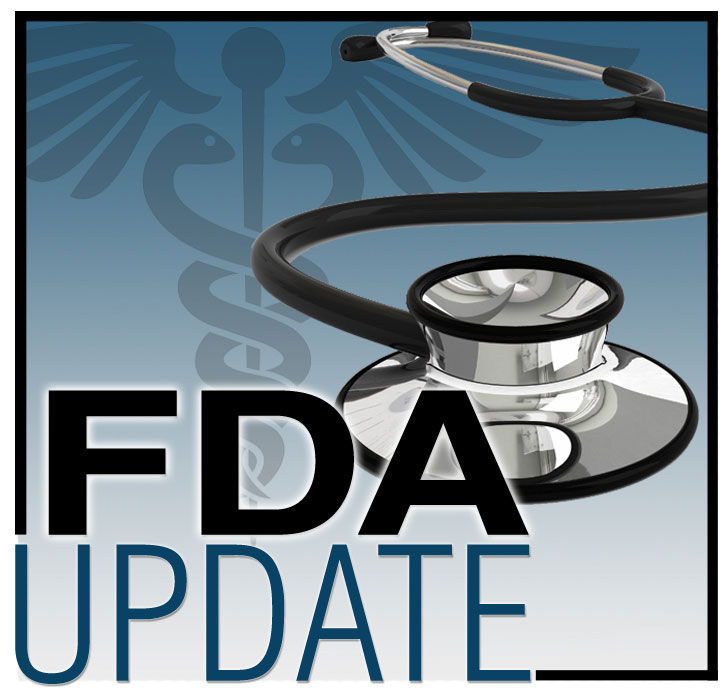- U.S. Food and Drug Administration (FDA) (http://dev-voice.ons.org/topic/us-food-and-drug-administration-fda)
- Cancer Risk Prevention (http://dev-voice.ons.org/topic/cancer-risk-prevention)
- Safety (http://dev-voice.ons.org/topic/safety)
- Clinical Practice (http://dev-voice.ons.org/topic/clinical-practice)
FDA Recalls Textured Breast Implants Because of Lymphoma Risk

On July 24, 2019, the U.S Food and Drug Administration (FDA) requested that Allergan recall its BIOCELL textured breast implants and tissue expanders because of the associated increased risk of breast implant-associated anaplastic large cell lymphoma; Allergan agreed and is removing the products from the global market.
The recall follows FDA’s announcement earlier in 2019 (https://voice.ons.org/news-and-views/fda-links-breast-implants-to-increased-alcl-risk) about the increased risk, but at the time the agency did not have enough medical device reports (MDRs) to request a recall. Today’s recall is the result of newly submitted MDRs reporting worldwide cases of BIA-ALCL and BIA-ALCL-related deaths associated with the devices. All of the affected products have the same BIOCELL textured surface (shell), which is a unique surface used only by Allergan.
FDA’s analysis (https://www.fda.gov/medical-devices/breast-implants/medical-device-reports-breast-implant-associated-anaplastic-large-cell-lymphoma) is based on a new worldwide reported total of 573 unique BIA-ALCL cases, including 33 patient deaths. Of the 573 cases of BIA-ALCL, 481 are reported to have Allergan breast implants at the time of diagnosis. In addition, 12 of 13 deaths occurring in patients with BIA-ALCL where the manufacturer was known occurred in patients implanted with an Allergan breast implant at the time of their BIA-ALCL diagnosis. The manufacturer and/or texture is unknown for the remaining 20 reported deaths from BIA-ALCL.
Based on the currently available information, including the newly submitted data, FDA reported that its analysis demonstrates that the risk of BIA-ALCL with Allergan BIOCELL textured implants is approximately six times the risk of BIA-ALCL with textured implants from other manufacturers marketing in the United States and continued distribution of Allergan’s Biocell BIOCELL textured breast implants would likely cause serious, adverse health consequences and potentially death from BIA-ALCL.
FDA is continuing to evaluate any new information and may, as a result, take action regarding other breast implants if warranted.
“Although most cases of BIA-ALCL are associated with the use of textured breast implants, particularly macro-textured implants, such as those made by Allergan, we are continuing our assessment to determine whether the risk of developing BIA-ALCL is limited to specific models of textured, or all textured breast implants,” FDA announced (https://www.fda.gov/medical-devices/safety-communications/fda-takes-action-protect-patients-risk-certain-textured-breast-implants-requests-allergan). “Therefore, at the present time, we believe all individuals who are considering a breast implant of any type be informed of the risk of developing BIA- ALCL.”
Recommendations for Healthcare Providers
At this time, FDA does not recommend removal of these or other types of breast implants in patients who have no symptoms, because of the low risk of developing BIA-ALCL.
Healthcare providers should inform patients about the risk of developing BIA-ALCL and what to look for. Consider the possibility of BIA-ALCL when treating a patient with late onset, peri-implant changes. In some cases, patients presented with a seroma, mass, hardening adjacent to the breast implant. For patients with suspected BIA-ALCL, ensure that experts familiar with the diagnosis and treatment of BIA-ALCL conduct an evaluation.
Collect fresh seroma fluid and representative portions of the capsule and send for pathology tests to rule out BIA-ALCL. Diagnostic evaluation should include cytological evaluation of seroma fluid or mass with Wright Giemsa stained smears and cell block immunohistochemistry/flow cytometry testing for cluster of differentiation and anaplastic lymphoma kinase markers.
Develop an individualized treatment plan considering current clinical practice guidelines, such as those from the National Comprehensive Cancer Network’s Plastic Surgery Foundation (https://academic.oup.com/asj/article/39/Supplement_1/S3/5304919).
Report all cases of BIA-ALCL in individuals with breast implants to MedWatch (https://www.accessdata.fda.gov/scripts/medwatch/index.cfm?action=reporting.home), and submit case reports of BIA-ALCL to the Patient Registry and Outcomes for Breast Implants and Anaplastic Large Cell Lymphoma Etiology and Epidemiology (https://www.thepsf.org/research/registries/profile). Healthcare personnel in facilities that are subject to FDA’s user facility reporting requirements should follow the reporting procedures established by their facilities. Prompt reporting of adverse events can help the FDA identify and better understand the risks associated with medical devices.
For more information and a complete list of the affected Allergan micro-textured implants, refer to the full FDA safety communication (https://www.fda.gov/medical-devices/safety-communications/fda-takes-action-protect-patients-risk-certain-textured-breast-implants-requests-allergan).
